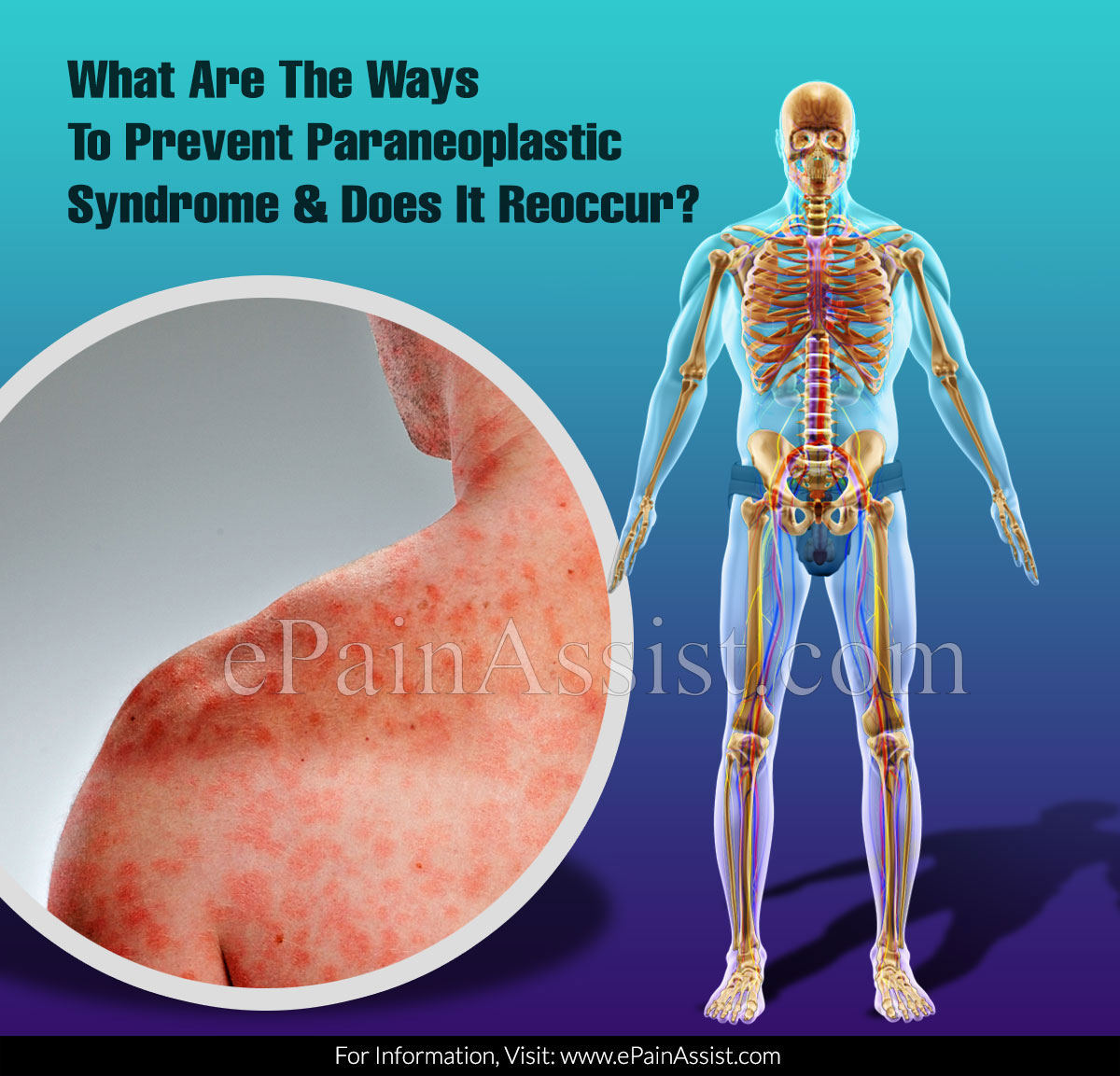How To Prevent Paraneoplastic Syndrome?
Well, there isn’t any way to prevent paraneoplastic syndrome (PNS) because it occurs due to an effect from the primary tumor. The probable mechanisms of how paraneoplastic syndrome occur can be either due to cancer secretion of functional hormone and peptides which causes the symptoms (in the case of endocrine PNS) or it’s an immunological reaction between cancer cells and normal healthy cells (in the case of neurological PNS). These hormone and immunological reactions alter the normal function of various tissues in the body and symptoms occur because of these alterations. The symptoms occur in distant areas from the primary malignancy according to the tissue that is affected.
Therefore, it’s not the paraneoplastic syndrome prevention that you should focus on, but the prevention or at least the early diagnosis of cancer. There are several risk factors identified for certain cancer and avoiding these risk factors can reduce the risk of you getting those cancers. Keep in mind avoiding these risk factors will not guarantee you will never get cancer because the exact aetiopathogenesis is not known in some of the cancers and until today there is no method to prevent cancer 100%. Even if you avoid the risk factors there is a possibility you might get cancer but avoiding the risk factors will reduce the risk of cancer. This will reduce the risk of you getting paraneoplastic syndrome as well.

Useful tips to reduce cancer risk are:
- Have a healthy balanced diet
- Do regular exercises and maintain a healthy weight
- Don’t use tobacco
- Protect yourself from the sun
- Get vaccinated against hepatitis and human papillomavirus
- Avoid risk behaviors such as unprotected sex and using illicit drugs.
- Do regular medical check-ups and cancer screening tests
By following the above-mentioned tips, you can reduce the risk of cancer to a certain level and reduce paraneoplastic syndrome as well. If you develop unwanted symptoms then it is best you seek medical care as soon as possible without waiting. (1)
Does Paraneoplastic Syndrome Reoccur?
To answer the question, we will present one case report and a research study.
This is a case report of a 69-year-old male who was diagnosed with small cell carcinoma of the lung (SCLC) and Lambert-Eaton myasthenic syndrome (LEMS) as a paraneoplastic syndrome. The patient was in stage IIIA and chemoradiotherapy was done and the patient achieved a complete response. With this anticancer treatment, the LEMS was also resolved. After 13 years at the age of 82 years, he experienced gait disturbance along with left supraclavicular lymphadenopathy. After further examination, it was revealed of a recurrence of SCLC and paraneoplastic syndrome. The recurrence of SCLS after 10 years of disease-free survival (DFS) is quite rare. (2)
The International Thymic Malignancy Interest Group database was researched to determine thymic epithelial tumors (TET) that are associated with paraneoplastic syndrome. Myasthenia gravis is the commonest PNS associated with TET. For this study 6670 patients with PNS from 1951 to 2012 identified. The cumulative incidence of recurrence (CIR) was very low, the 10-year CIR was 17.3%. the overall survival was 21.6 years so, according to this study, TET with PNS had a good prognosis. (3)
The paraneoplastic syndrome can occur in almost all systems and it can occur before or after the diagnosis of cancer. The primary tumor and paraneoplastic syndrome can recur even after the successful treatment of cancer. Some PNS resolve spontaneously while some patients with the paraneoplastic syndrome can die either due to cancer or it’s complication commonly due to acute heart failure or infection. Also, the recurrence or remission can be a clinical measure to assess the success or failure of cancer treatment. (4) (5)
Conclusion
There aren’t specific methods to prevent the paraneoplastic syndrome. But by reducing the risk of getting cancer you can also reduce the risk of getting the paraneoplastic syndrome. So, have a healthy diet, do regular exercise and maintain a healthy weight, avoid tobacco, protect yourself from the sun, get vaccinated against hepatitis and human papillomavirus, avoid risky behaviors and do regular medical check-ups and cancer screening test. There are several case reports and studies of the recurrence of primary cancer and paraneoplastic syndrome. Therefore, the paraneoplastic syndrome can recur sometimes even after 10 years of successful cancer treatment.
- https://www.cancer.gov/about-cancer/causes-prevention/patient-prevention-overview-pdq
- https://cancercommun.biomedcentral.com/articles/10.1186/s40880-016-0127-x
- https://www.jto.org/article/S1556-0864(17)33064-2/fulltext
- https://emedicine.medscape.com/article/280744-overview
- https://www.intechopen.com/books/lung-cancer-strategies-for-diagnosis-and-treatment/paraneoplastic-syndromes-in-lung-cancer
Also Read:
- What Leads To Paraneoplastic Syndrome & Can It Be Cured?
- What Is The Best Treatment For Paraneoplastic Syndrome?
- Can Paraneoplastic Syndrome Go Away On Its Own & What Are It’s Natural Remedies?
- Best Exercises/Activities For Paraneoplastic Syndrome Patients
- How Common Is Paraneoplastic Syndrome Or Is It A Rare Disease?
- Coping Methods For Paraneoplastic Syndrome
- How Does Paraneoplastic Syndrome Affect The Body & What Triggers It?
